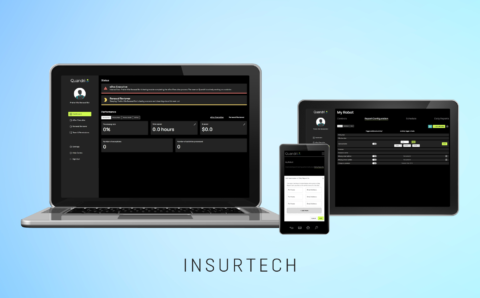
There are two types of software when it comes to meeting customers’ needs:
-
- Commercial off-the-shelf software (COTS)
That aims to cover long lists of requirements, that is released onto the market and has been previously packaged for distribution. Usually developed by third-party vendors.
For example, Adobe.com and Kaspersky.com are ready-packaged commercial software products and services. They could cover your text, video and image editing needs and keep your PC or laptop secure and safe.
-
- Custom software development
Custom software development as opposed to COTS is targeted specifically to your unique set of needs.
You may have already heard about custom software as bespoke software. The phrase comes from the tailoring trade.
Custom software development is usually carried out either by an in-house development department, or by an outsourcing/offshoring company. Like any other software product, your custom project would go through must-have stages, like the following:
-
- preparing the requirements
- designing the architecture
- coding and testing
- deployment
All of them are necessary to ensure the expected quality level and timely implementation.
Table of Contents:
Advantages
If you are still playing around with multiple services in order to fulfill your business needs, think about the advantages you could get when you go with software tailored for your business needs.
Efficiency
The first and the most powerful one for any type of business is Efficiency. Custom software has the goal of supporting your processes swiftly and productively. Forget about adjusting the COTS application for months or spending a fortune on consultants and various advisors. Invest in the product that most improves your business and gives you an advantage ahead of your competitors.
Flexibility
Adjust your own software as your business grows and changes. Instead of purchasing additional products and services for your current set up, you could go with gathering the requirements that your development team or partner would turn into the development roadmap. This will help you plan future expansion and be sure that your software is a catalyst rather than a COTS-anchor. Of course, you should remember that support and maintenance costs will fall to your organization, so you should be careful with functionality requests and think about the future benefits.
Profitability
Your bespoke software could be another source of income or at least cover its own development cost. It depends on the Terms and Conditions and, as a customer, you often own the software. So you could then go on to sell it or license it to organizations with similar workflows and needs.
Freedom and Independence
What would happen to your business if commercial software pricing went up or even worse – if they stopped maintenance of the supplied packages? This would not have to bother you. When you have a custom-made solution the only thing you have to worry about is the growth of the personal organization.
Curious About Custom Software Costs?
Get a clear picture of what it takes to build software tailored to your business. Explore factors that influence pricing and budget with confidence.
Sounds good, right? However, the very first step to getting bespoke software is to understand whether you really need it and are ready or not. The key here is the proper analysis of buying existing COTS vs creating a custom one. If you do not have time for a free consultation on this point, try a shortcut: prepare a list of required functions and compare them with existing solutions. You should continue using the commercial software if the coverage is 80%+. If you are not happy with the results and are thinking of a deeper business analysis then we can only congratulate you on this decision. There are now more topics to discuss: support and automation of your unique business processes, specific data management and your industry info, special privacy or security needs, replacing legacy in order to cut costs or achieve productivity and much more.
Once you have made a decision on creating a custom-made solution for your needs, think about the people whom this software could come into contact with. We use the term “collaborators” to describe everybody involved in the process. The list starts with users, the most significant group, as they provide feedback on the system they use and the processes they manage with the help of the system. Sponsors or business partners who financially support or who will feel any type of effect that your software would bring them. Remember developers who will take care of the creation and who will digitize your improvements. Depending on your industry and business flow you might also want to add customers to the list, often their feedback appears to be the most involved in this process.
So, why do we need this collaborator team? The name of the next important stage is the answer – Requirements. In order to succeed with the product, you must get off to a proper start with by gathering the most up-to-date and detailed requirements for your future product. Through close and productive work these collaborators will get you there. Collaborators will share their knowledge on the way to global development and work extremely hard to achieve quality and responsiveness.
The most critical moment at the beginning of the process for collaborators is to be on the same page about what future software should or should not do. The best way to do this would be to effectively define and manage customer’s needs along with staying within the financial budget and scheduled timeframe. We at PLANEKS have a special framework and approach to organize collaborators and gather requirements. Along with many checklists for ensuring the quality, we provide our customers with a smooth and easy process for that.
Among different qualities, the final requirements should have these important points:
-
- Correctness
- Completeness
- Consistency
-
- Feasibility
- Modularity
- Traceability
Software Development Methodologies
With the above requirements defined and with confirmation from all collaborators involved, the process moves on to the next stage. It is time to apply the methodology and select the technologies.
Our recommendation is to consider the next methodology when creating new software:
Agile Development
Agile development – break product development work into small increments that minimize the amount of up-front planning and design. It mainly targets complex systems and product development with dynamic, often non-deterministic and non-linear characteristics. If the scale is global, we recommend SAFe.
Scaled Agile Framework (SAFe)
Scaled Agile Framework (SAFe) provides a way to scale agile methodology to a larger organization such as a global development team.
DevOps
DevOps is a combination of development and operations. It is an agile-based approach that brings software development and IT operations together in the design, development, deployment, and support of software.
Need a Global Development Team?
Access top talent and scale your development efforts efficiently with our offshore services. Expand your capabilities without the overhead.
Common Challenges in Custom Software Development
Custom software development offers a maximum tailored approach but comes with its own set of challenges. Awareness of these potential obstacles allows businesses to prepare and overcome the bottlenecks more effectively.
Unclear or Evolving Requirements
One of the biggest hurdles in custom development is vague or constantly changing requirements. At the start of a project, stakeholders may not have a complete picture of what they need, or business priorities may change during development. This case often leads to scope creep, where the project’s goals surpass the original plan, causing delays and budget overruns. Here, early and continuous communication can mitigate this, but the inherent uncertainty still remains a risk.
Selecting the Appropriate Technology Stack
Opting for the right tools and technologies is integral for the long-term success of custom software. The selected technology must reflect not only the current project needs but also support the opportunities for future scalability and maintainability. A poor or inappropriate choice can result in technical debt, difficulty integrating new features, or compatibility issues down the line.
Budget Overruns
Bespoke projects often face unexpected costs due to underestimated complexities, integrated features, or alterations in scope. Surpassing the budget can strain resources and force compromises in quality or timelines. To keep finances under control, you should calculate your costs, covering contingencies, and maintain transparent budget tracking.
Integration with Existing Systems
Many businesses operate employing legacy systems or various third-party applications. Integrating new custom software seamlessly with existing infrastructure often proves technically challenging. Data consistency, API compatibility, and system downtime must all be carefully managed to avoid disruptions.
Security and Compliance Concerns
Protecting sensitive data and ensuring compliance with regulations like GDPR or HIPAA is non-negotiable. Thus, tailored software must be designed with security in mind from day one to prevent vulnerabilities and costly breaches. Compliance requirements add additional layers of complexity to development and testing.
Strategies to Overcome These Challenges
Implementing the proper strategies within made-to-order software projects builds confidence among stakeholders and grows the chances of timely, on-budget delivery.
Comprehensive Requirement Gathering
Engage all relevant stakeholders from the initial stages and often. Detailed, well-documented requirements reduce ambiguity and help set realistic expectations. Workshops, interviews, and prototype reviews can clarify needs and catch gaps before development starts.
Agile Development Methodology
Agile practices ensure flexibility by breaking the project into smaller increments or sprints. Following this methodology, teams can smoothly adapt to changing requirements, get regular feedback, and continuously refine their product. Agile provides benefits like high adaptability, cohesive collaboration, and eliminates expensive surprises late in the project.
Experienced Development Team
Assembling a team with proven skills in the chosen technology stack and relevant industry knowledge accelerates development and improves quality. Seasoned developers often see potential pitfalls from afar and offer efficient solutions that less experienced technicians may miss.
Robust Testing Protocols
When partnering with reliable IT vendors, comprehensive testing (unit, integration, performance, and security) is typically embedded throughout the development flow. Early and frequent testing identifies issues before they escalate, ensuring a stable, reliable product upon release.
Security Best Practices
Incorporate security measures from the outset. The time-tested practices to include are data encryption, access controls, secure coding standards, and regular security audits. Embedding security into the implementation process, rather than as an afterthought, significantly reduces risks.
Comparison with Off-the-Shelf Software
The choice between custom and commercial off-the-shelf software (COTS) depends on business needs, budget, and growth plans. Their differences can help entrepreneurs make an informed decision.
Customization
Custom software is built to fit your specific workflows and challenges in the most precise way possible. In contrast, one-size-fits-all products offer generic features designed to appeal to a broad market, which may necessitate compromises or workarounds.
Scalability
As your business grows, tailor-made solutions can be scaled and enhanced in parallel, providing a long-term technology asset. COTS applications often have limited scalability or require additional purchases for expanding features, potentially creating vendor lock-in.
Cost
Relatively higher initial investment in bespoke products is facilitated by design, development, and testing. However, over time, it can reduce operational costs, eliminate unnecessary licensing fees, and provide competitive benefits. COTS software typically requires a lower upfront budget but often implies ongoing subscription fees and hidden costs to customize or integrate. Use our custom software development cost calculator to estimate your expenses.
Best Practices for Successful Custom Software Development
Adhering to best practices helps organizations avoid common pitfalls and achieve lasting value and solid value streams from their custom software projects.
Stakeholder Involvement
Maintain regular communication throughout the project with users, sponsors, developers, and other collaborators. Continuous adjustment of the project progress, goals, and plans ensures the product meets expectations and adapts to changing needs.
Clear Documentation
Documenting requirements, architectural decisions, and change requests thoroughly provides transparency and continuity. Well-maintained documentation is an excellent tool that optimizes onboarding new team members and supports future maintenance.
Post-Deployment Support
Software is never truly finished, always necessitating regular upgrades and modifications. Due to this, you should plan for ongoing support, bug fixes, and feature updates to keep the product relevant and practical within an ever-changing market.
Related Technologies
What other technologies and practices should be considered?
1. Mobile Technologies
Nowadays it is just a must. In 2018, 58% of site visits were from mobile devices. It means that if you can operate through your smartphone – you should use that option. Depending on your industry mobile application technologies could improve sales growth, build a new audience, optimize your internal processes, or at least be the source of valuable analytics.
2. Open Source Software
There is a type of software that can be inspected, modified, enhanced by anyone. With its help, custom software development will be more productive, as the development team is able to improve interoperability by avoiding proprietary architectures.
3. Artificial Intelligence
AI software imitates human thought and cognitive processes to solve complex problems and automate repetitive tasks for your organization. For example, AI chat program could easily handle customer support in your company answering questions or guiding users to solutions. Intelligence demonstrated by machines provides lots of ways to improve your business with the help of Machine Learning(ML), Natural Language Processing (NLP), Machine Perception, Robotics and much more
4. Blockchain technology
Blockchain technology is a time-stamped series of immutable record of data that is managed by a cluster of computers not owned by any single entity. Having no central authority, the information is accessible to anyone. It could be applied for secure peer-to-peer payments and immediate microtransactions, immutable registers and self-executing smart contracts and much more.
5. Analytics Technologies
Analytics technologies are the great bridge between data and decision making. Easy implementation gives you the advantage of a dashboard with visualized data on your way to predictive capabilities.
Having all this info now you are already closer to your organisation’s growth. However, if you still have questions about software development for your needs – contact us and speed up your business by tailoring your custom software!

Robot Factory
We built Robot Factory to fully automate insurance operations, enabling brokers to handle documents & workflows efficiently with minimal manual effort.

Restaurant Management
Introduced a cloud-based system for restaurants, combining POS & labor data to optimize operations and increase profitability through automation.

Elaborate
Elaborate’s system simplifies lab results with alerts, educational insights, and appointment scheduling, enhancing patient & doctor interactions.

